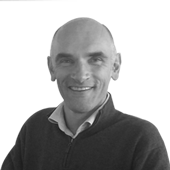It's no big secret today that healthcare systems are under stress. The world has just reached a population of 7 billion people and the majority doesn’t have access to quality care.
Here in the US we may have 32 million new patients entering the healthcare system and it's predicted there will soon be a major doctor shortage.
Even when care is available, the supply is limited to the point where rationing, at least in the US, looms as a potential constraint. Supply shortages manifest themselves into longer wait times for primary care appointments, and even longer times for specialist appointments. When appointments finally do occur, the result is commute time, waiting time, and a 5 minute appointment with a doctor before the next person comes in. Frustrated patients with insufficient access to overwhelmed doctors is not a prescription for success (or health).
Communications in the world are changing fast. Five years ago we didn’t have a globally usable smartphone; two years ago we didn’t have a tablet, soon smart TVs are going to be the "it-thing". All of these devices are becoming ubiquitous, usable, and most of all, loved by the public. People quickly find out just after getting the device that it is capable of making rich video phone calls, send messages and pictures to family members, check stocks and weather. And it doesn't take long before one wonders: how can I use all this technology to help me talk to my doctor?
Another interesting trend that's emerging is natural user interactions via speech and body gestures. Though these technologies are still up and coming, they are exponentially better than they were a few years ago. Apple's Siri can interpret natural language with magical ease and Microsoft's Kinect already has legions of followers dancing around their living rooms. IBM's Watson recently beat the Jeopardy champs at their own game. What's more, however, is that these technologies can be more helpful for helping people stay healthy than they are telling you where the nearest coffee shop is or who played Alfred in the Dark Knight. They can get help with rehabilitation, perform post-surgery follow-up interviews, automatically take skin pictures for dermatology analysis, and much more.
This is one of the reasons we are building DocPal. DocPal is a web- and mobile-based telecommunications platform that can be used by practitioners to offer an array of advanced telemedicine services to patients such as vital sign collection, follow up Q&A, rehabilitation, and video conferencing with a medical specialist.
At the core of DocPal is an avatar-driven application that engages the patient in a conversation and uses natural user interface technologies such as speech recognition, body recognition, and augmented reality to interact with the patient and collect data before transferring the patient to a video call with a medical specialist.
Check out the video below to see a demo of DocPal and learn more.
To view this video content, you must accept YouTube cookies. These cookies make it possible to share or react directly on the social networks to which you are connected or to integrate content initially posted on these social networks. They also allow social networks to use your visits to our sites and applications for personalization and targeting advertising.
what’s next?
Our goal is to improve the healthcare system by envisioning new methods and tools for patients and doctors to communicate more richly and frequently, while at the same time being conscious of everyone's precious time. The project is currently in the trial stage, and we expect the healthcare industry to start taking advantage of these telemedicine consultations in the next 12 months.

I am a Product Manager at Orange Silicon Valley and the creative force behind Sens.ly. I have a passion for creating game-changing products and I created one of the first enterprise voice portals, a speech-based outbound IVR platform and a location-based social network. I also holds several provisional patents in the areas of healthcare, security, telecommunications and augmented reality.